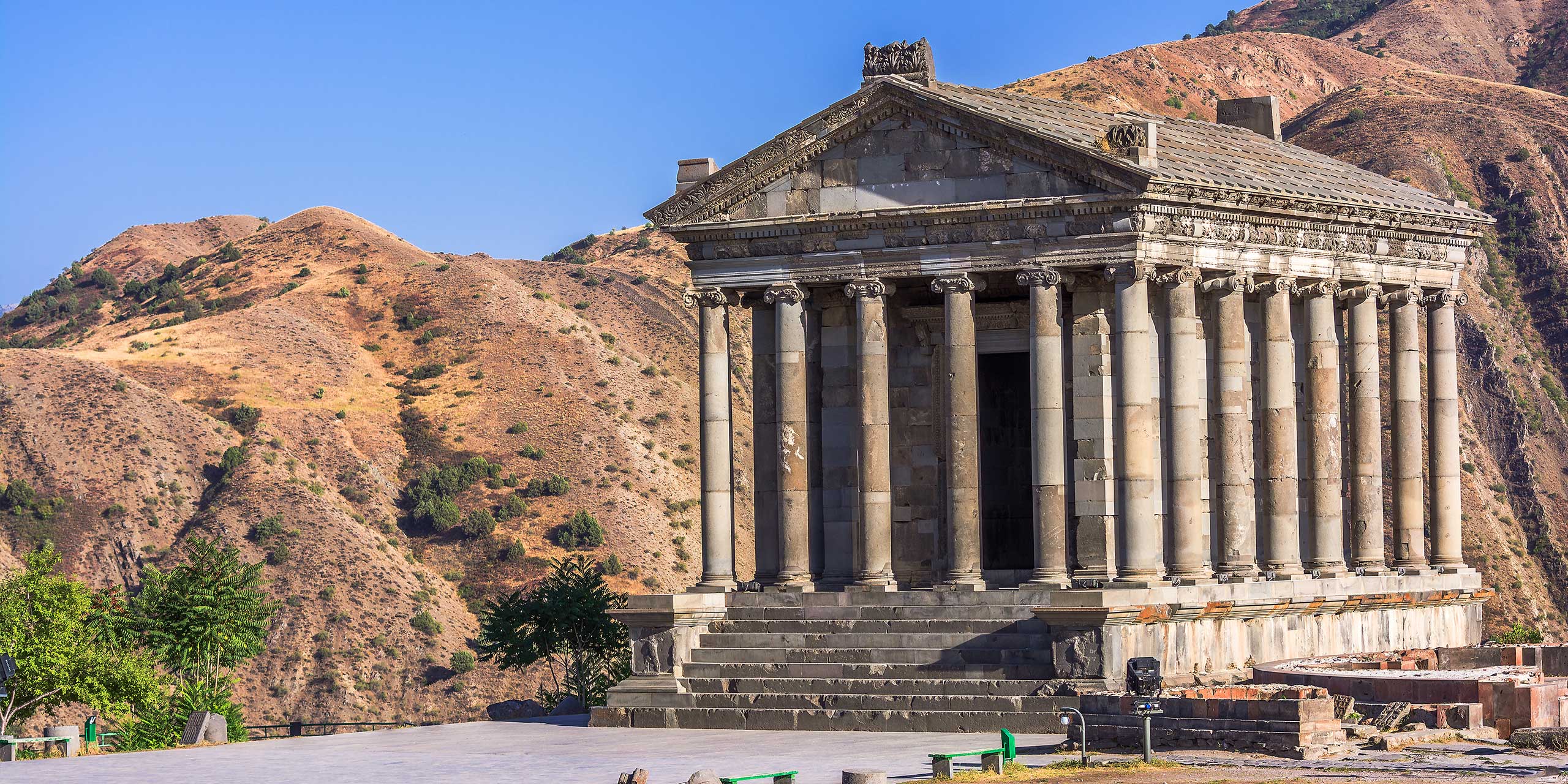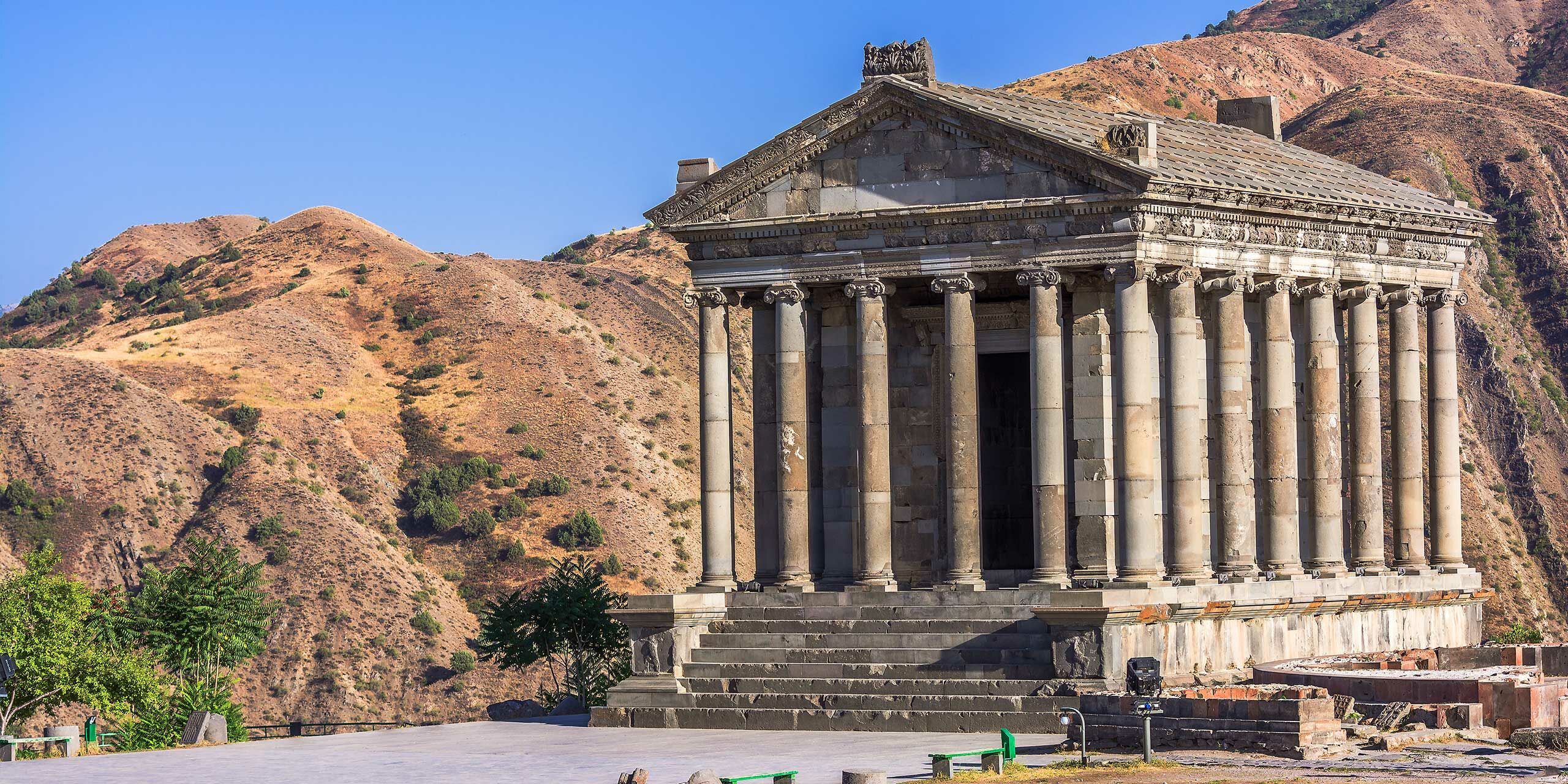
Armenia is a very Christian country. The cathedrals and monasteries all look how you think a religious building in Armenia should look. And then there’s Garni. For reasons no one can agree upon, there is a first century pagan Roman-style temple just east of the capital of Yerevan. And it has slowly become one of the must-see sites in Armenia.
What?
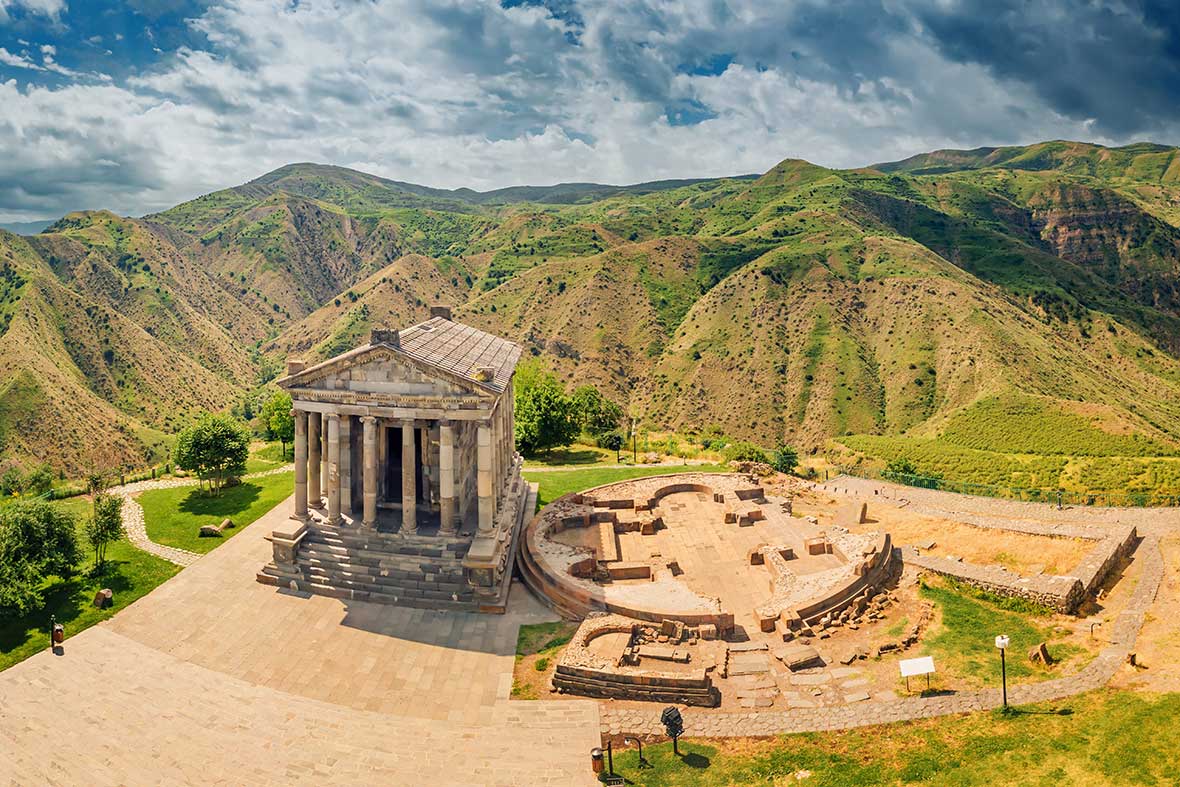
Armenia is Christian today but its history goes back much further — with many of the buildings and structures built on old pagan structures. Some of these pagan structures, such as the dragon stones and Carahunge, remain a mystery. The huge Roman temple outside the country’s biggest city is no different.
Prevailing sources believe the temple was built by an ancient Armenian king somewhere around 77 CE. Christianity had not yet reached Armenia at this time, and Tiridates I who then ruled was a Zoroastrian priest. Tiridates is an important character in both pagan and Christian history of not just Armenia but the world.
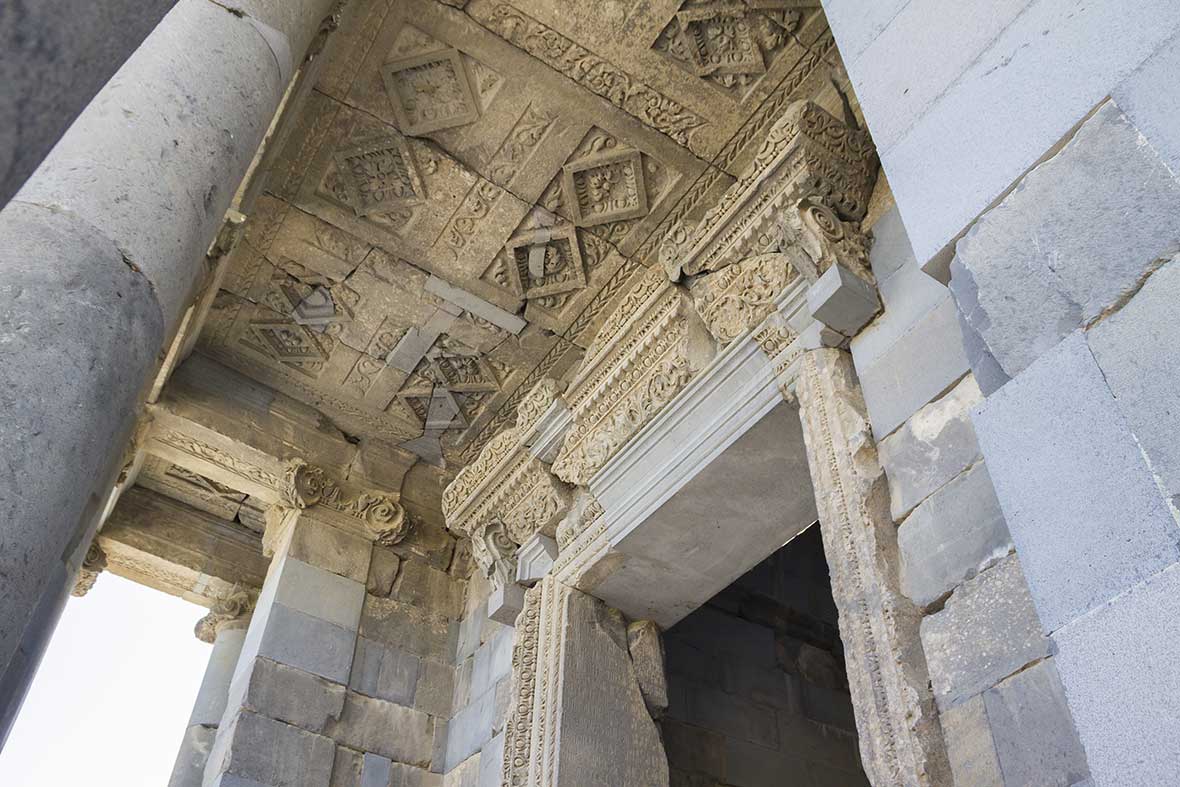
At the time he came to power the waning power of Rome under the notorious Nero was fighting the might of the Parthians. If indeed it was built in 77 CE, the style is hardly surprising. As a borderline client state of Rome at the time Tiridates made a trip to Rome just 10 years previous where he would meet the mad emperor in Naples. His trip there is covered in detail in the writings of many Romans who record him as an intelligent and just king. During his visit, they even put on gladiatorial games.
His travels with the “magi” to the west are said by some to be the precursor to the dominance of the monotheistic Mithraism and the “christ child’s” three wise men visiting on the occasion of his birth. Whatever the reality, Tiridates made an impact on Rome (and Pliny the Elder) before heading home to his kingdom, and he brought with him a number of artisans which would likely go onto build the temple of Garni.
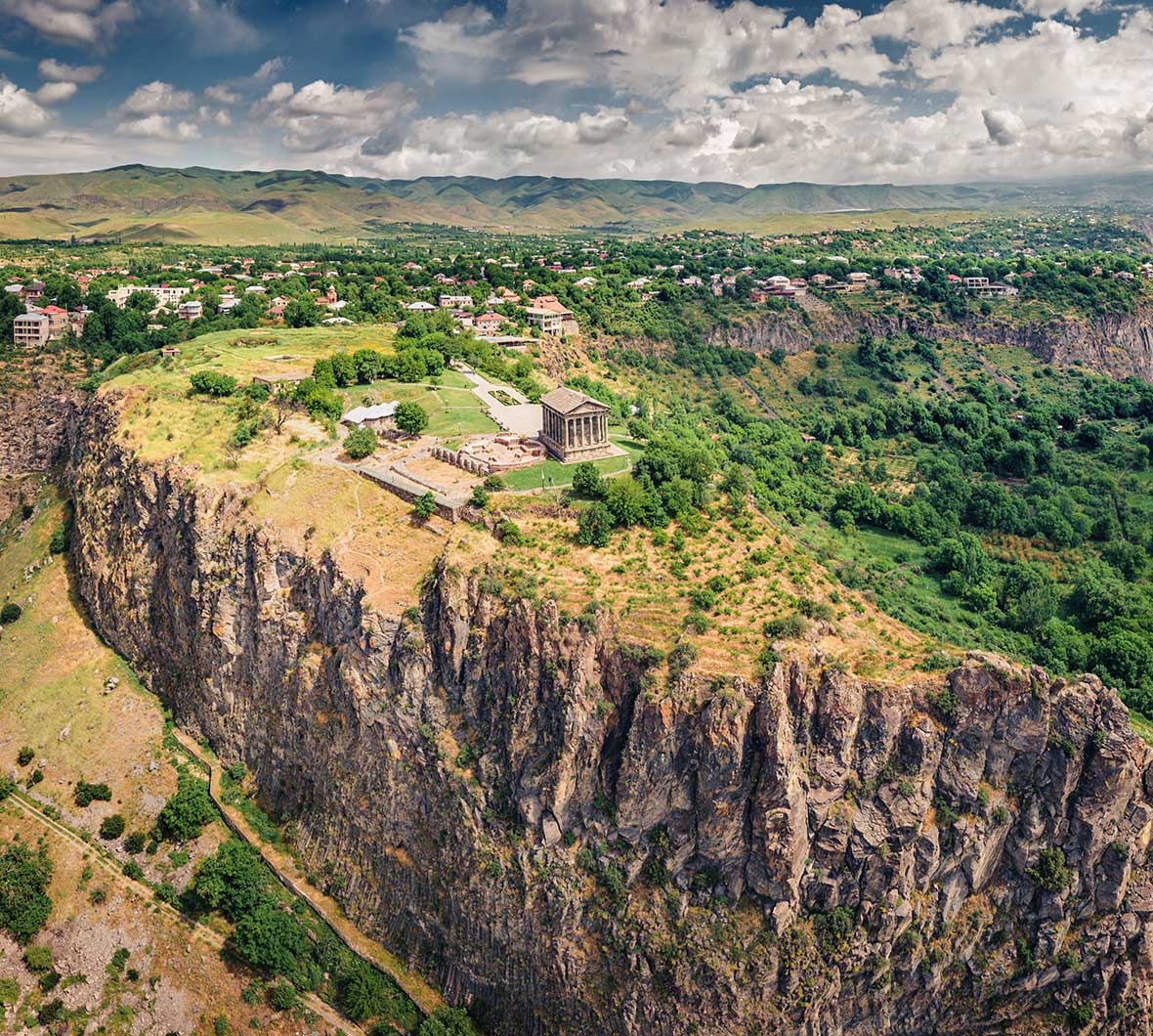
The temple would go on to be dedicated to the sun god Mihr but, of course, history is rarely kind and the building would undergo a number of destructive incidents. The first it had to survive was the complete destruction of all pagan structures in the wake of Christianity, namely under Tiridates III. The early Christians and subsequent invasions from the east were ruthless to such structures, and Garni is the only survivor in Armenia.
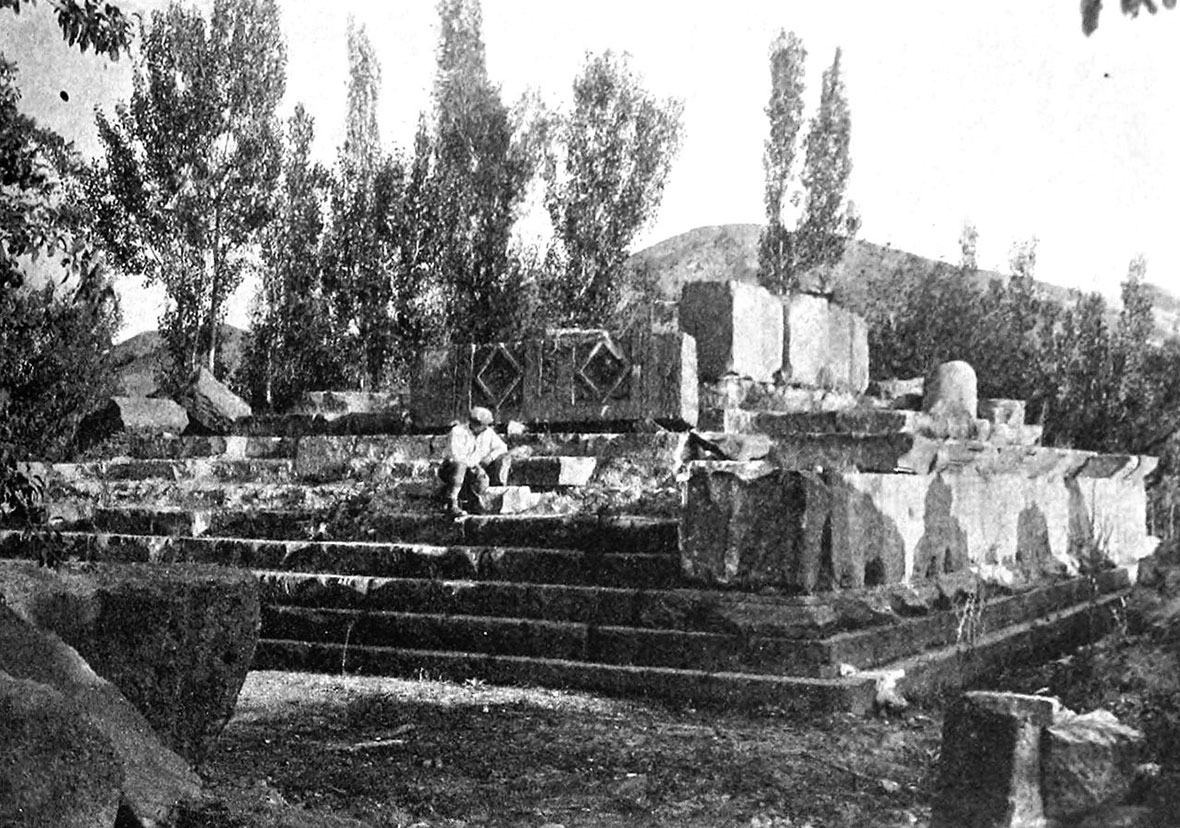
Over the next thousand years, rulers would trade modern day Armenia and Garni would be a “cooling house”, perhaps a residence, and even the subject of ancient graffiti.
But in the seventeenth century a devastating earthquake would finally bring Garni temple tumbling. Still, by the 1960s, nearly 80% of the original material remained and it was reconstructed to its original Hellenic form.
Today, it is a travel hotspot — and not just because it is a pretty (and weird) building. This has been the center of Hetanism — Armenian Neopaganism— for more than three decades.
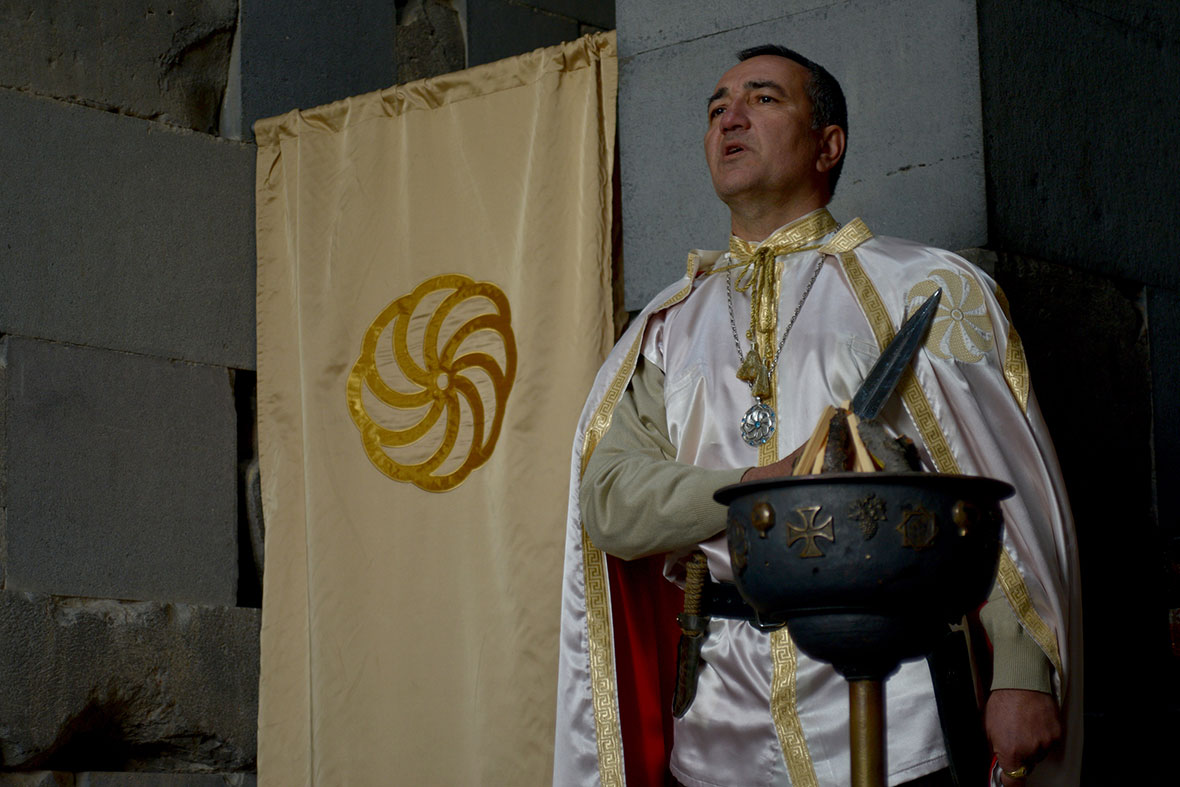
This is where a number of pagan rituals are held each year, most notably the pagan New Year in March to celebrate the birth of the god of fire, Vahagn, also known as Vahagn the Dragon Reaper whose beard of fire and burning eyes helps to slay beasties.The summer festival of Vardavar where people douse each other in water, is also recognized at the temple.
Almost 2,000 years have passed since Tiridates returned from Rome. He lives on in the words that mark the temple itself: “The Sun God Tiridates, uncontested king of Great Armenia, built the temple and the impregnable fortress.”

